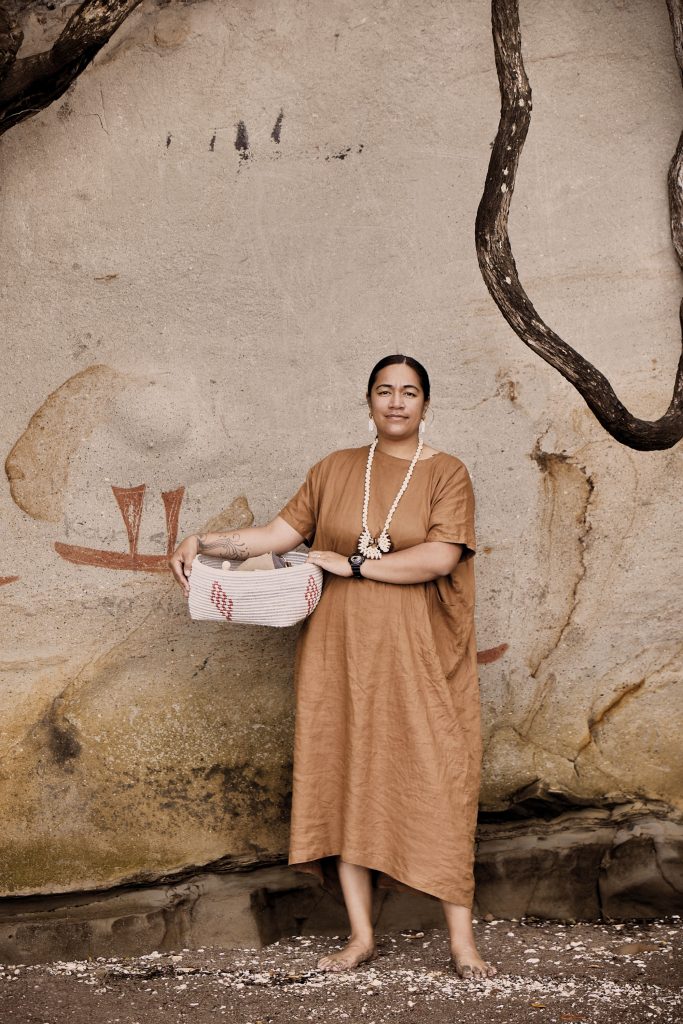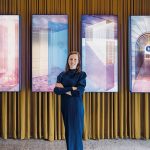Multidisciplinary artist Cora-Allan Wickliffe is represented by galleries in both Tāmaki Makaurau/Auckland (Masterworks) and Pōneke/Wellington (Bartley & Company Art), and has lived and practised her craft overseas. These days, however, she’s happily based in Waitākere/West Auckland, where she grew up. Of Māori (Ngāpuhi, Tainui) and Niuean (Alofi, Liku) descent, she completed a Bachelor of Visual Arts & Design in Photography at AUT, then graduated in 2013 with a Masters in Visual Arts & Design in Performance. In recent years, she’s turned her talent to traditional hiapo barkcloth painting, and is thought to be the only current practitioner using methods and materials similar to those used in Niue before the early 1900s.
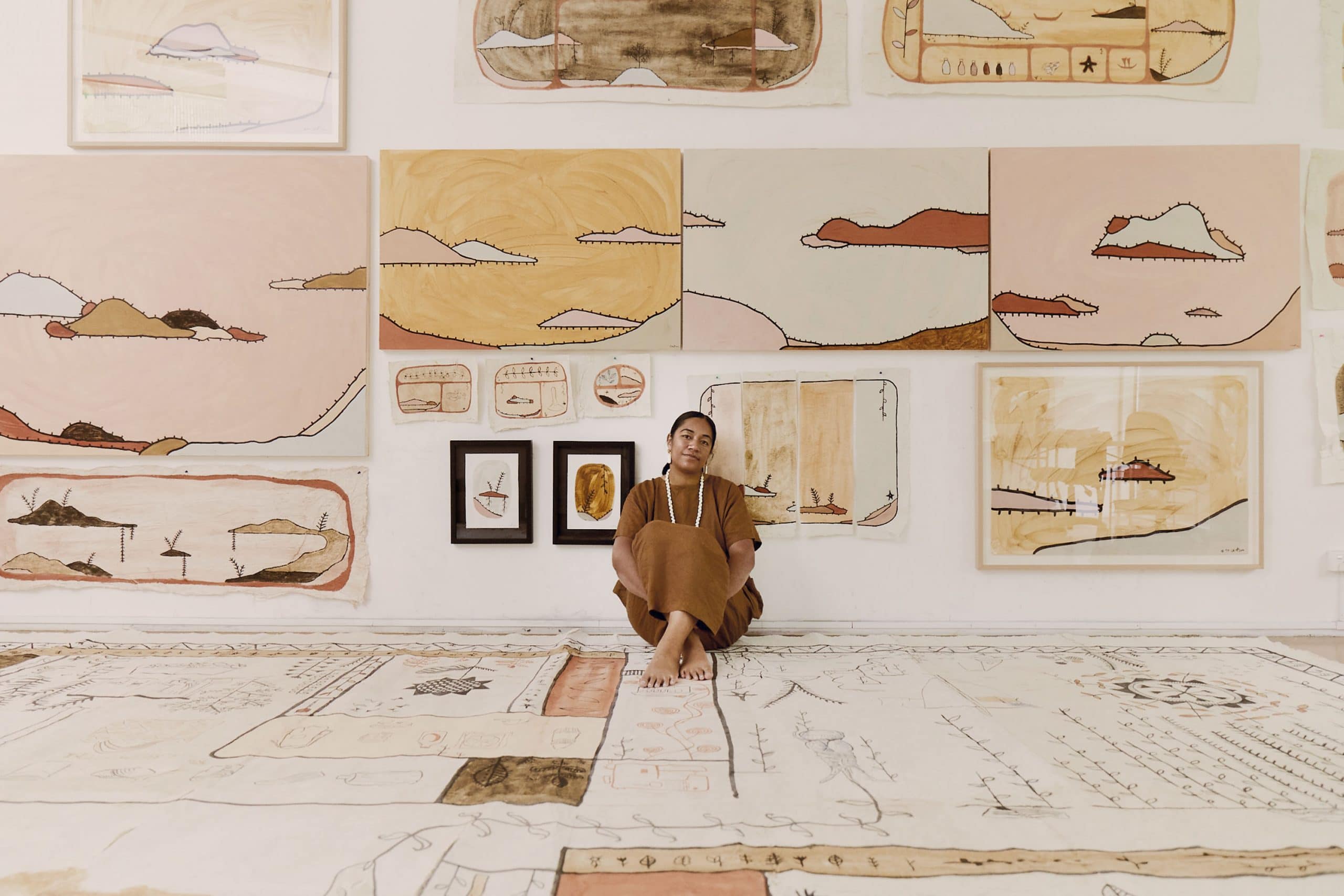
So Cora-Allan, you’ve expressed yourself through various means in the past — what methods and materials are you using now? At present, my thoughts and heart are with hiapo. A lot of my methods reflect a traditional practice and I like the arduous process of making the barkcloth, the ink, and then the painting. Using materials sourced from nature makes things fun and cheap, and I’m grateful to Papatūānuku [Earth Mother] for all of the materials I use. I’ve always been passionate about learning traditions from both sides of my heritage, and now I’m able to enjoy making work from natural resources, as our tūpuna did. Making hiapo is physical and hard, but I love using plants, clays and soils for colour; it feels very basic and normal — the kind of normal I want to pass down to my sons Chaske-Waste and Wakiya-Wacipi.
You’ve been instrumental in reviving the art of hiapo in the Niuean community — what led you to pursue it? My grandparents asked me to make hiapo for their burial cloths, and they’ve been so good to me my whole life and asked for nothing, so I couldn’t say no! I also have a very stubborn personality and can usually figure out most things, so this was a journey I was willing to take for them. I did a lot of research to discover the processes of other islands all over the Pacific, and pieced together what would make the most sense in Niue with the plants there. Making my practice sustainable was about figuring out how to harvest materials from the islands and use the materials I have locally, and make it all work so I can produce hiapo year-round.
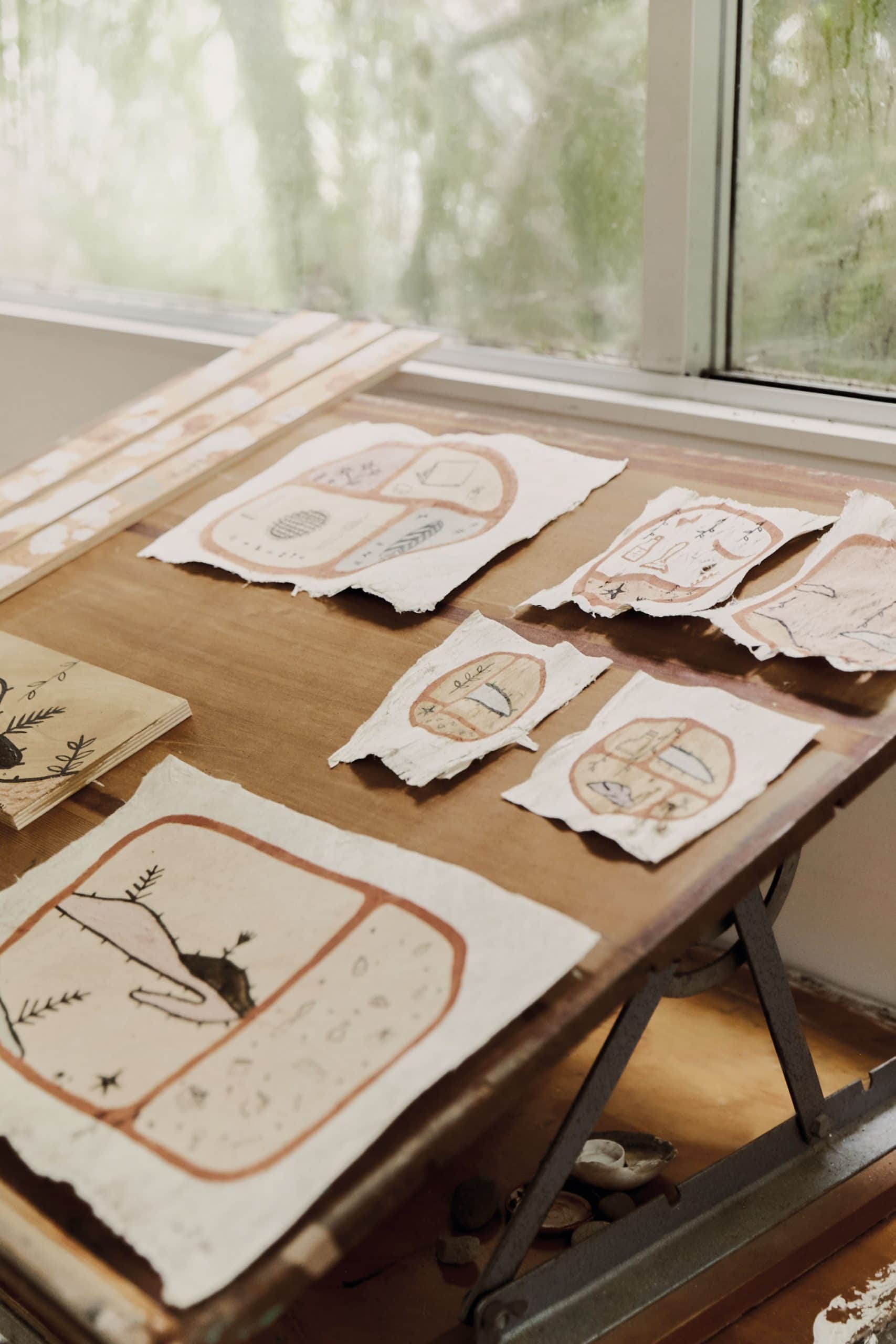
You’ve been the recipient of several prestigious awards, most recently the McCahon House Artist’s Residency, which you took up in French Bay/Otītori Bay in Titirangi from September to December. What were some of the highlights of that experience? The residency was a gift for my whānau — moving into a space near the beach after lockdown was just what we needed, and I’d been preparing all year and was ready to start making. There were so many highlights, but being able to make more than 300 works, experimenting with colour and finding 19 different colours in the Waitākere area was amazing, plus spending time with my sons in the McCahons’ old house and them just being present was cool. The residency gave me my dream space — and then we had to move back into our whare! But it has given me something to aim for [a larger studio than her current one at home] and I now know what I’m capable of, and that when given time and space, I expand and make a crapload of good work.
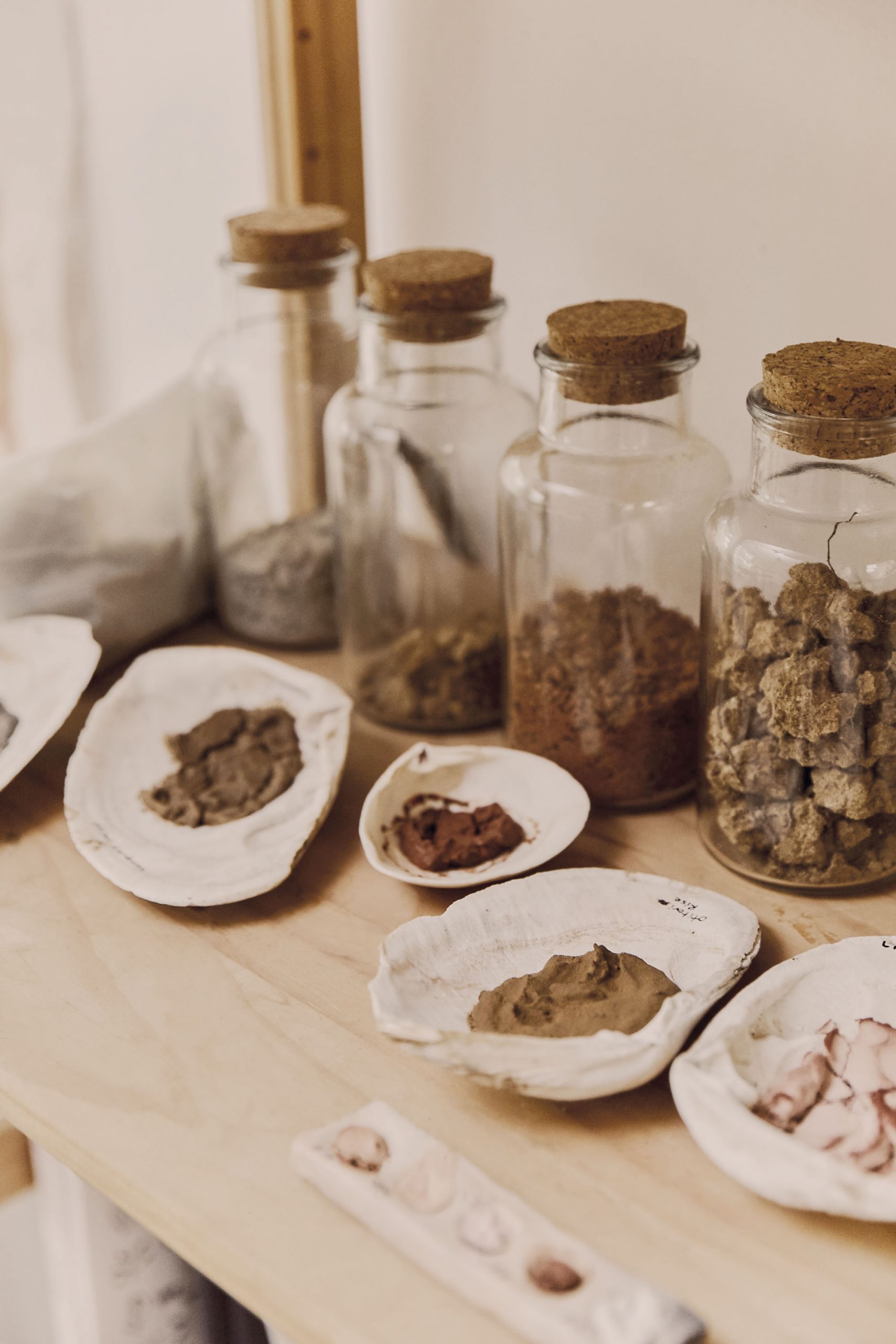
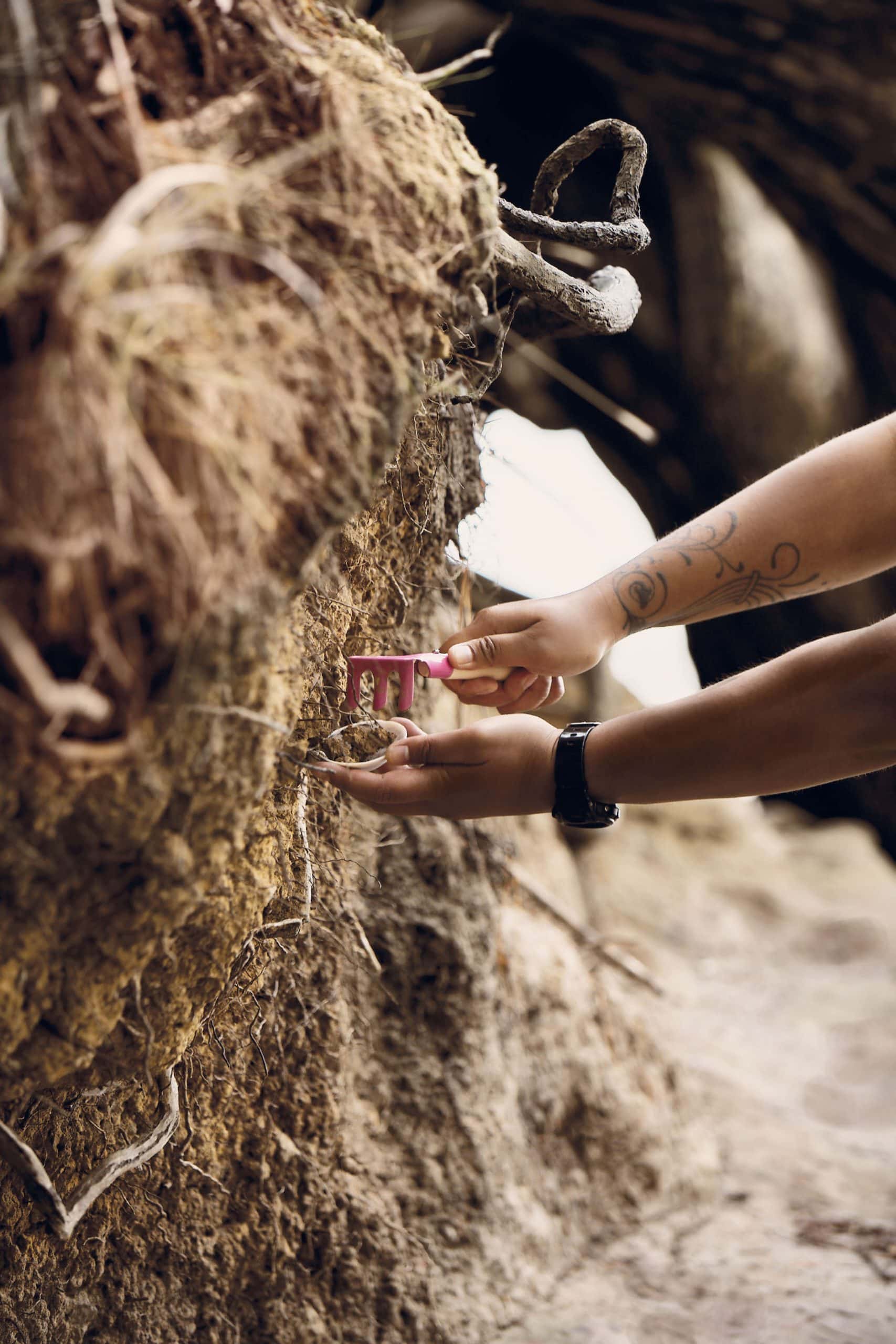
What flows through your fingers when you’re creatively in the zone? I watch Netflix and just go for it! I paint intuitively and let things flow, especially when I’m working on larger pieces — although there is the odd time when I just sit back and stare at the blank hiapo for ages. Once the image emerges off the surface, I paint until I get tired, and then start again the next day. I like feeling fresh and energised, and it keeps my lines clean.
What are you optimistic about? I’ve always known what I want and had big goals; the saying “Stranger things have happened” pops into my head when I second-guess myself and helps me continue working towards them. Being optimistic and confident can be hard, but I love being an artist and will work hard for the dream. I’m grateful for every opportunity I’m given.
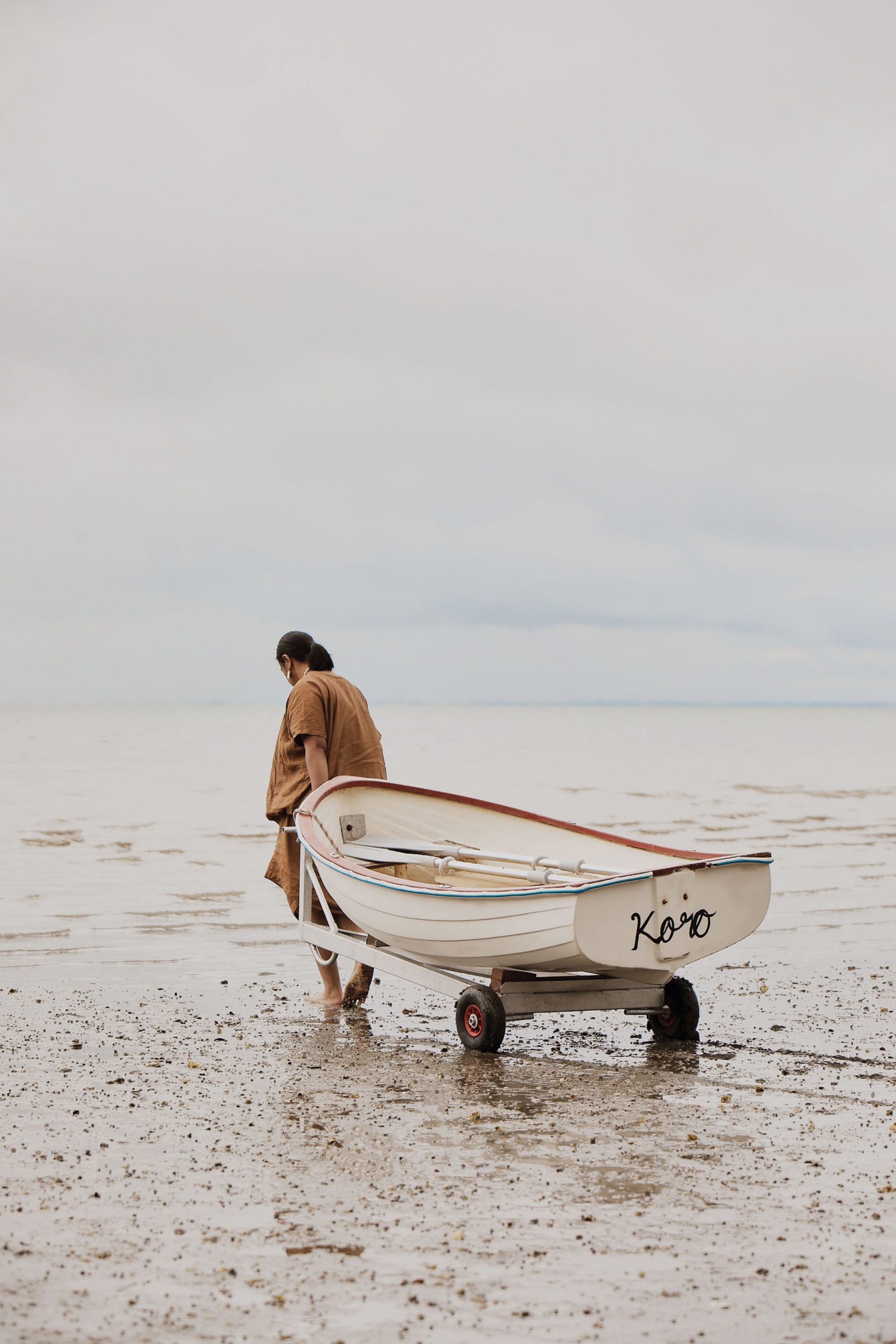

Paintings from your residency are being exhibited at Te Uru Waitākere Contemporary Gallery until June, and other work is held at Auckland Museum and Te Papa — where else will we be able to see your stuff in 2022? I have a pretty solid year that started in February with the show at Te Uru and another in Paris. There are still a couple of things to be confirmed, but my other shows this year will be at Bartley & Company and Webb’s in March, Melanie Roger Gallery in June, Corban Estate Arts Centre in July and Masterworks in September. cora-allan.co.nz
Words Philippa Prentice
Photography Holly Sarah Burgess

